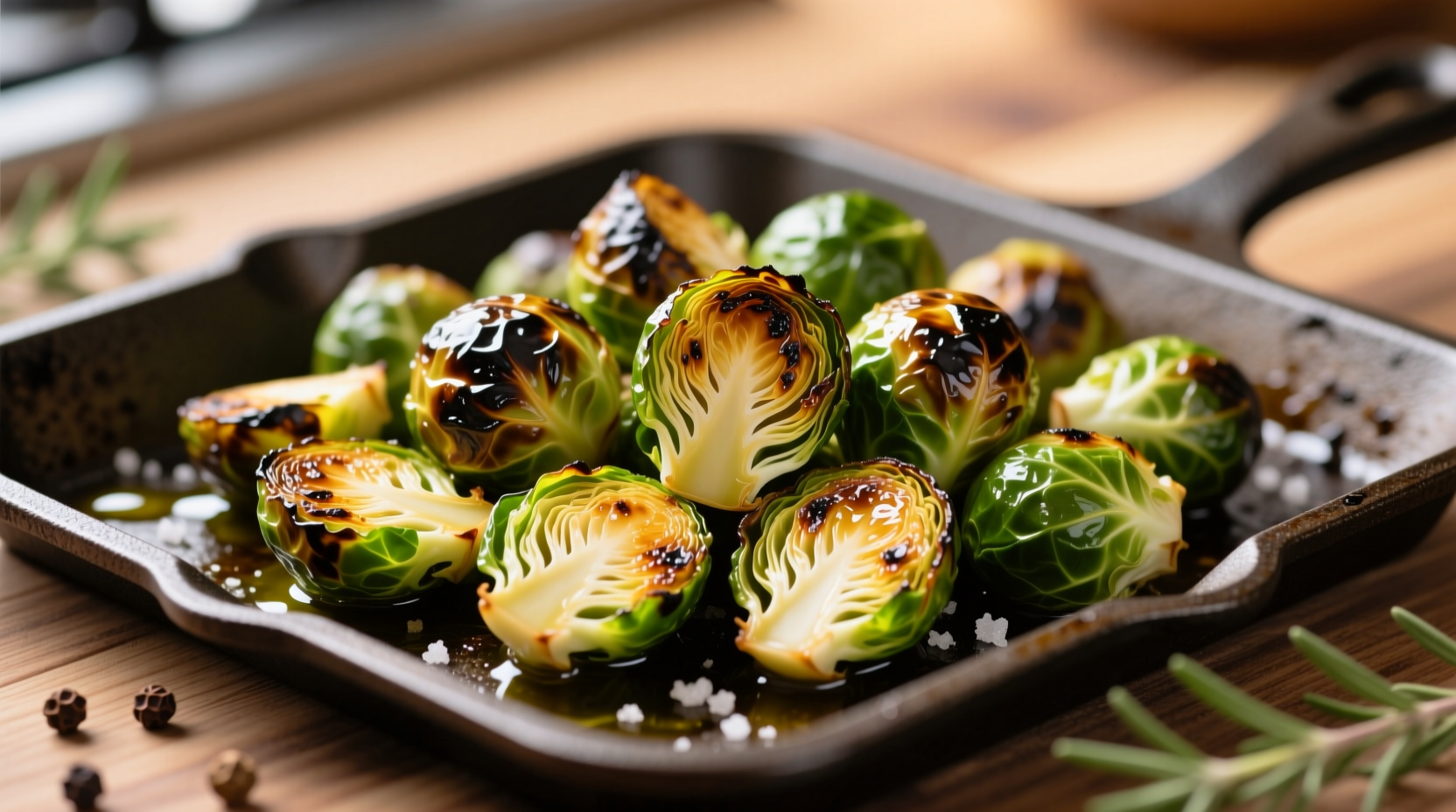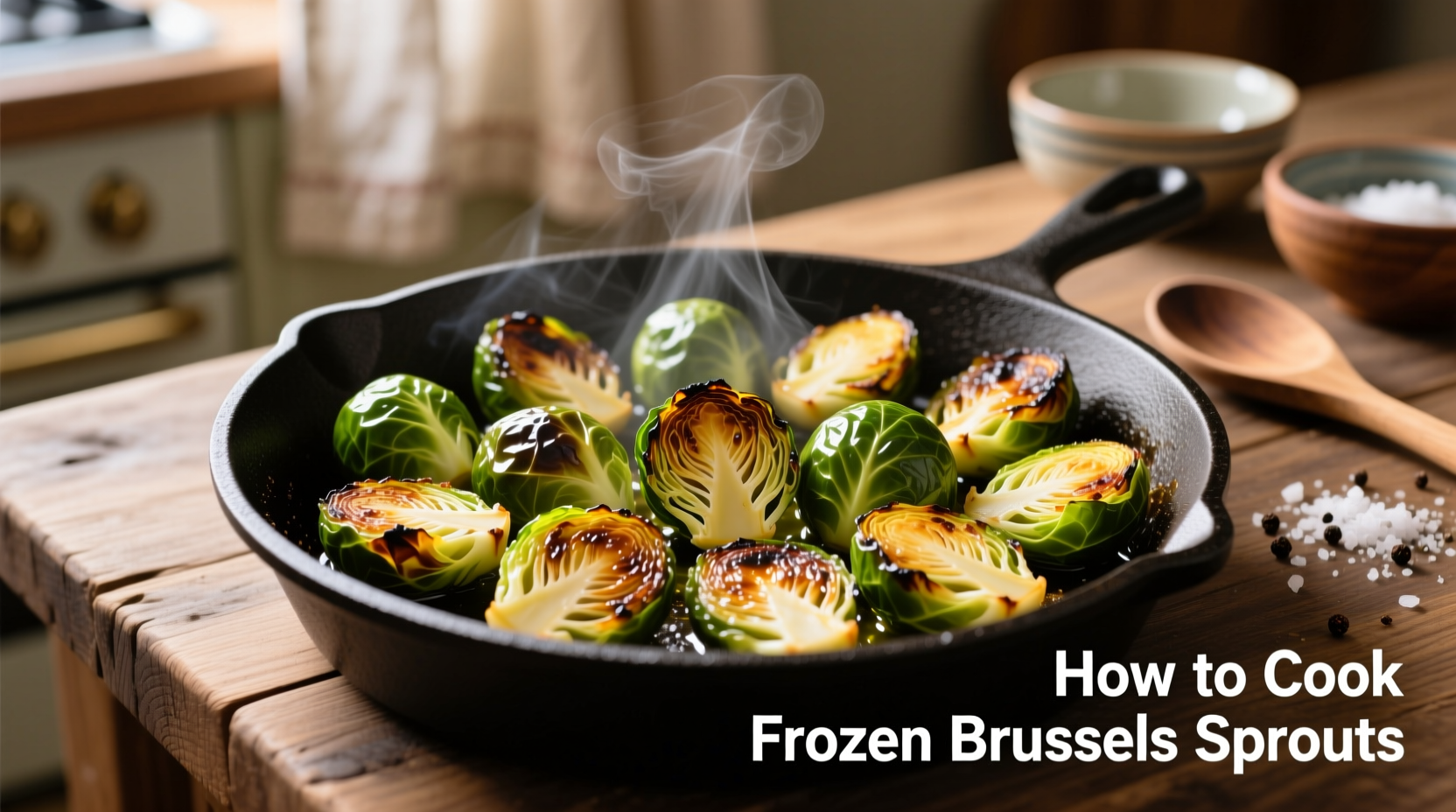Forget mushy, bland frozen vegetables. Cooking frozen Brussels sprouts properly delivers tender-crisp texture and nutty-sweet flavor that rivals fresh. The key is applying high, dry heat immediately without thawing—this prevents excess moisture that causes steaming instead of browning. Whether you're using an oven, air fryer, or stovetop, these professional techniques transform frozen Brussels sprouts from freezer to fork in under 25 minutes.
Why You Should Never Thaw Frozen Brussels Sprouts First
Food science explains why skipping the thaw step is crucial. According to USDA Food Safety and Inspection Service guidelines, thawing frozen vegetables before cooking releases cellular water that creates steam during cooking. This steam environment prevents the Maillard reaction—the chemical process responsible for browning and complex flavor development. Frozen Brussels sprouts contain about 86% water content (USDA FoodData Central), and thawing releases this moisture prematurely.
| Cooking Method | Time | Temperature | Texture Result |
|---|---|---|---|
| Oven Roasting | 20-25 min | 425°F (220°C) | Crispy exterior, tender interior |
| Air Frying | 12-15 min | 400°F (205°C) | Extra crispy, evenly browned |
| Stovetop Sauté | 10-12 min | Medium-high heat | Lightly charred, firm-tender |
Oven Roasting: The Most Reliable Method
This technique delivers consistent results for weeknight dinners. Preheat your oven to 425°F (220°C) with rack positioned in the upper third. While heating, spread 16oz frozen Brussels sprouts in a single layer on a parchment-lined baking sheet. Drizzle with 1½ tablespoons high-smoke point oil (avocado or grapeseed) and ½ teaspoon fine sea salt.
Toss gently to coat evenly, then arrange cut-side down for maximum caramelization. Roast 15 minutes, then flip sprouts and continue roasting 5-10 minutes until deeply browned and tender when pierced with a fork. The critical timing window comes during the last 5 minutes—this is when browning accelerates dramatically.

Air Fryer Method: Fastest Crispy Results
For time-pressed cooks, air frying produces exceptional results in half the time. Preheat air fryer to 400°F (205°C). Place frozen sprouts in basket (don't overcrowd—work in batches for 16oz). Add 1 tablespoon oil and ¼ teaspoon salt. Shake basket immediately after loading to distribute oil.
Cook 8 minutes, shake basket vigorously, then cook additional 4-7 minutes until browned and crisp. The shaking step is non-negotiable—it ensures even exposure to the fryer's circulating heat. Unlike oven roasting, air fryers require this mid-cook agitation because their heating elements create hot spots.
Stovetop Sauté Technique: Weeknight Dinner Hero
When you need dinner in 15 minutes, this method shines. Heat 1½ tablespoons oil in a large skillet over medium-high until shimmering (about 2 minutes). Add frozen sprouts in single layer—crowding causes steaming. Cook undisturbed 5-6 minutes until bottom develops crust.
Flip sprouts and add 2 tablespoons water or broth. Immediately cover to create steam that cooks interiors while maintaining exterior crispness. Uncover after 2 minutes and continue cooking 3-4 minutes until liquid evaporates and browning resumes. This hybrid technique solves the stovetop's biggest challenge: uneven cooking between exterior and interior.
Microwave Warning: How to Avoid Disaster
Microwaving frozen Brussels sprouts directly almost guarantees rubbery, uneven results. If absolutely necessary, spread sprouts on microwave-safe plate, cover with damp paper towel, and cook at 50% power in 2-minute intervals. After each interval, drain accumulated water and redistribute sprouts.
For acceptable results, finish microwaved sprouts in a hot skillet with oil for 3-4 minutes to restore texture. The University of Minnesota Extension confirms that microwave-only cooking of frozen vegetables typically results in 30-40% more moisture retention than dry-heat methods, directly impacting texture quality.
Pro Flavor Enhancements
Elevate your cooked sprouts with these chef-recommended additions:
- Add 1 minced garlic clove during last 2 minutes of cooking
- Toss with 1 teaspoon balsamic vinegar or lemon juice after cooking
- Sprinkle with 2 tablespoons grated parmesan during final 3 minutes
- Finish with flaky sea salt and freshly cracked black pepper
Nutrition Comparison: Frozen vs. Fresh
Contrary to popular belief, frozen Brussels sprouts often contain more nutrients than "fresh" supermarket varieties. According to USDA research, flash-freezing preserves nutrients at peak harvest. Fresh sprouts lose up to 45% of vitamin C within 7 days of harvest, while frozen maintains 90%+ nutrient levels.
Both forms provide excellent fiber (4g per serving) and vitamin K (137% of daily value). The cooking method affects nutrient retention most significantly—roasting preserves more antioxidants than boiling, as confirmed by a 2022 Journal of Food Science study.
Troubleshooting Common Problems
Soggy sprouts: This happens when moisture isn't evaporated quickly. Solution: Increase oven temperature by 25°F and spread sprouts in single layer with space between.
Burnt exteriors, raw interiors: Indicates insufficient preheating. Always preheat cooking surfaces for 10-15 minutes before adding frozen vegetables.
Lack of browning: Oil quantity or type issue. Use enough oil to coat all surfaces (1.5 tbsp per pound) and choose high-smoke point oils like avocado (smoke point 520°F).











 浙公网安备
33010002000092号
浙公网安备
33010002000092号 浙B2-20120091-4
浙B2-20120091-4